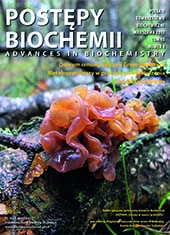Biological significance of edible mushrooms in mycoremediation
Abstract
The importance of fungi in environmental remediation is due both to their ability to biotransformation of xenobiotics and to accumulate heavy metals. These processes depend primarily on the species, while the role of the species or systematic affiliation is less important, as is the strategy of symbiosis, for example: mycorrhiza, parasitism or saprophytism. The main factors controlling the absorption of metals by mushrooms are bioavailability and soil type, while xenobiotics are dependent on soil factors such as cation exchange capacity, pH, or organic matter content. The composition of the substrate is an important factor as there are large differences in the intake of individual substances. The composition, the amount of impurities present, but also the age of the mycelium that may be present in nature for many years or (compared) only for several months under culture conditions. It is a well-known fact that the content of mushroom fruiting bodies is correlated with the emission of pollutants.
Downloads
Published
Issue
Section
License
All journal contents are distributed under the Creative Commons Attribution-ShareAlike 4.0 International (CC BY-SA 4.0) license. Everybody may use the content following terms: Attribution — You must give appropriate credit, provide a link to the license, and indicate if changes were made, ShareAlike — If you remix, transform, or build upon the material, you must distribute your contributions under the same license as the original. There are no additional restrictions — You may not apply legal terms or technological measures that legally restrict others from doing anything the license permits.
Copyright for all published papers © stays with the authors.
Copyright for the journal: © Polish Biochemical Society.




